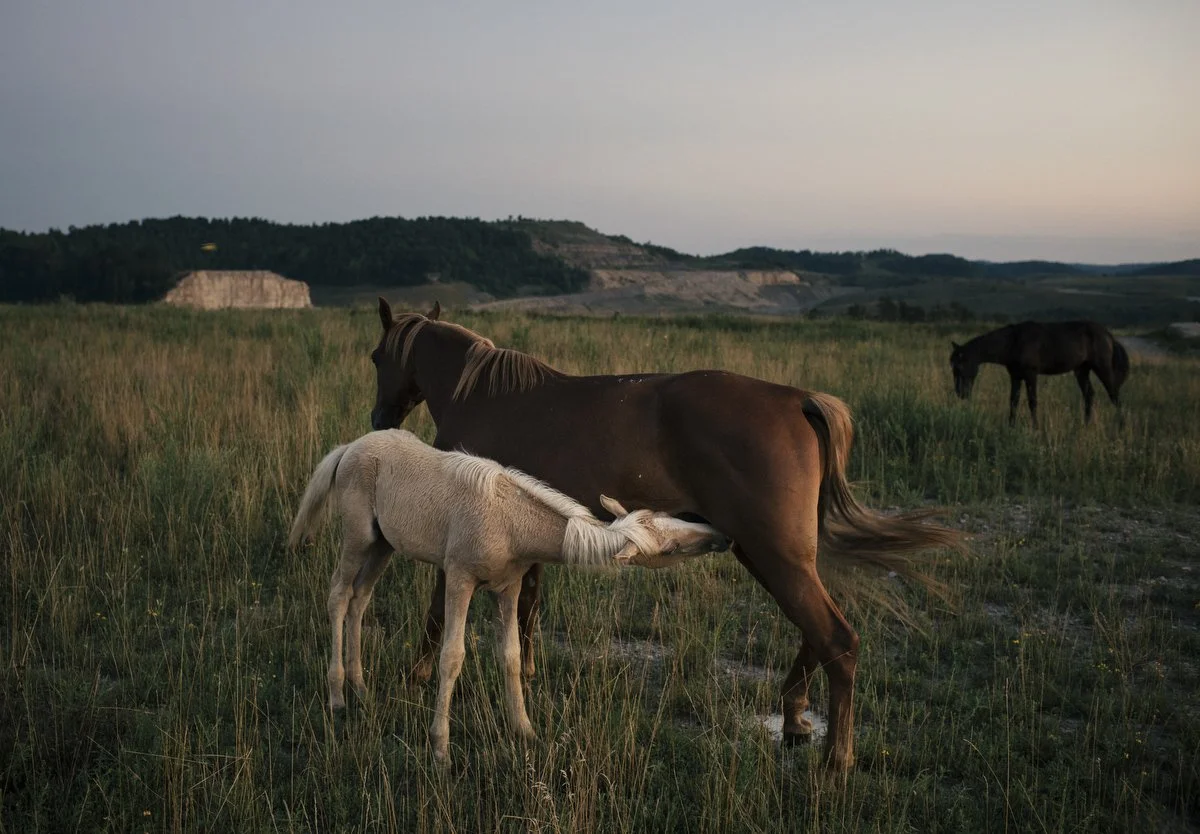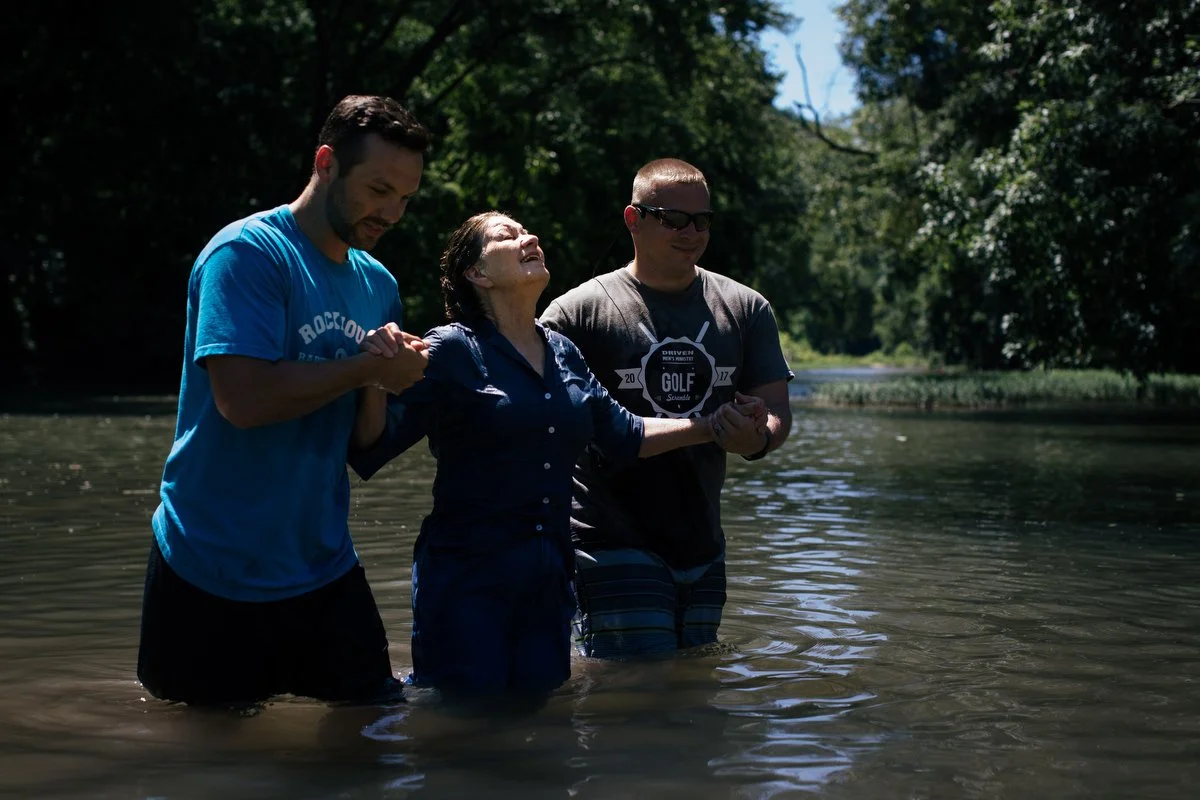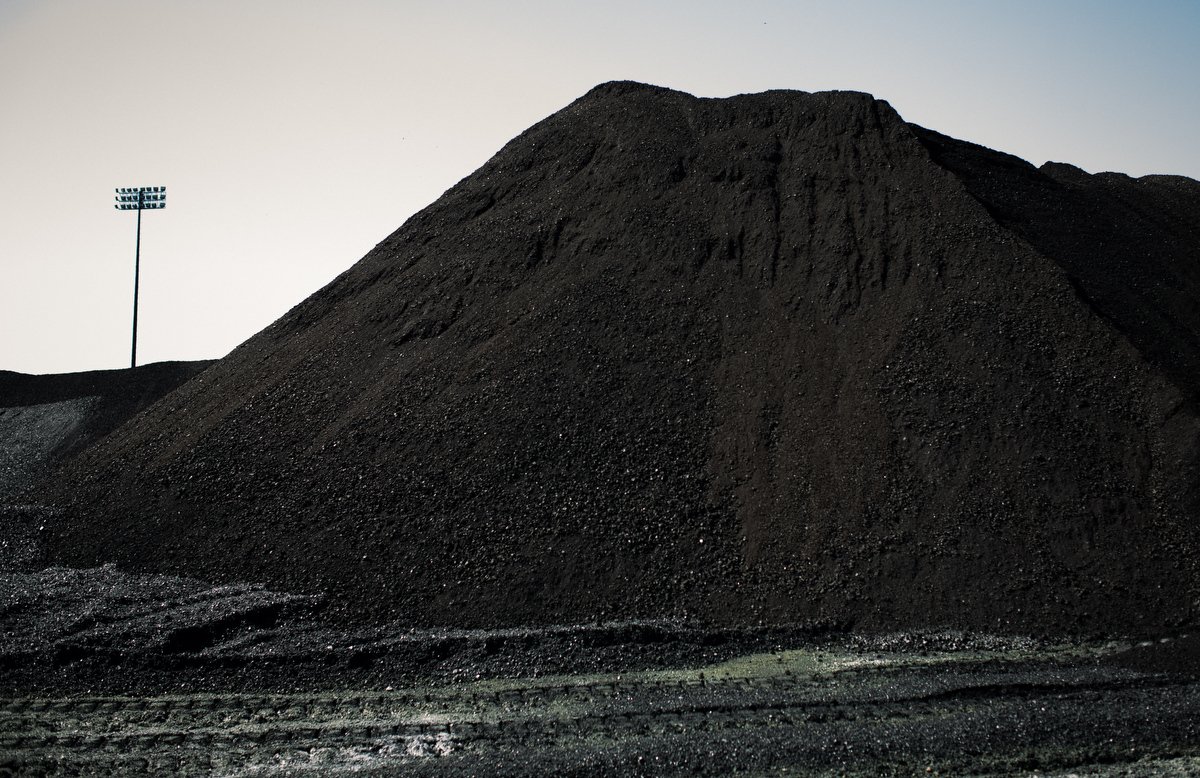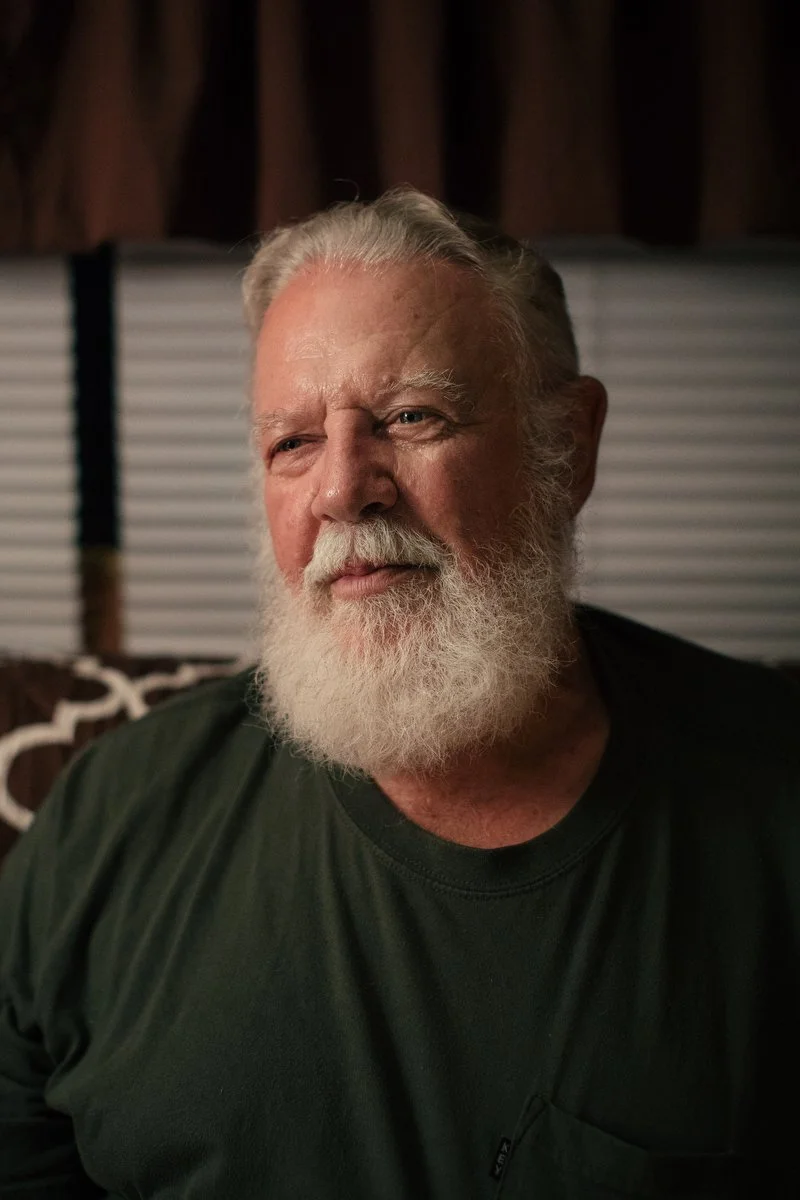Born of Water
Outside of Hyden, abandoned horses, including a foal, graze on top of an old mountaintop removal site that is part of the Thunder Ridge Mine. The Sierra Club sued the ICG Hazard coal company when high levels of selenium runoff were found in area streams. The mountaintop removal process of coal extraction is ongoing in the area and can be seen at back.
Photographed for the Kentucky Documentary Photography Project
Coal mining sustained families for generations along the Kentucky River water basin. But today, many confront a crisis of faith in an industry that has left the region environmentally and economically vulnerable.
About 700,000 people draw water from the river, a beautiful, winding body that flows from Appalachia to the Bluegrass Region before its confluence with the Ohio River. Along the way, the Herrington Lake community learned that coal ash — a toxic residue from burning the mineral at a nearby power plant — contaminates the water where they fish and their children swim.
The region’s landscapes are altered by mountaintop removal, a search for coal that threatens not only the beauty of the land but also its biodiversity as toxic heavy metals contaminate streams near mines.
Many Kentuckians are working for a cleaner future. The power plant at Herrington Lake is moving toward renewable energy, having expanded its solar and hydroelectricity output. In the Bluegrass Region, a grassroots organization has redeveloped an abandoned hydroelectric facility — with plans for more. And in the Cumberland Mountains, environmental and faith groups work together to restore the ecosystems at mountaintop removal mining sites.
Life along the basin depends on the efforts of groups and individuals to protect the water that passes by and through these Kentucky towns, forests and farmlands.
Brothers Wadon Whitehead, 9, at right, and Hyden Wolfe, 10, fish the Kentucky River at the Trace Branch Campground near mountaintop removal sites in Hyden. High levels of selenium runoff have been found in area streams.
Cars park near the Body of Christ Ministries in Irvine.
Chet Sygiel, with the Kentucky Watershed Watch, tests E. coli levels in the South Fork of the Quicksand Creek in Jackson. Agricultural chemical runoff, seen at left, and straight pipes -- the practice of sending sewage directly into the river -- have added to contamination concerns in the water basin.
Pastors Tyler Shields, at right, and Brian Hubbard lift Connie Griffie up from the water after baptizing her in the Middle Fork of the Kentucky River.
An old coal processing plant stands outside of Jackson. Politicians have promised to save coal, but its decline has been underway for decades, failing to compete with natural gas, a cheaper and cleaner-burning energy source made abundant by advances in fracking technology. And while environmental regulations have depressed the coal industry, the Trump administration’s recent rollback of Obama-era rules on power-plant emissions won’t save it. Coal prices are too low, and extraction costs are too high.
Mechanical maintenance engineer Steve Roberts rebuilds a recycling pump used to fluidize gas desulfurization at the E.W. Brown Generating Station. The plant harnesses four forms of energy production: coal, gas, hydro, and solar. Despite efforts to lessen environmental impacts, the station is entangled in a lawsuit over coal ash -- the toxic residue produced from burning coal -- which was buried in contact with groundwater that flows into Herrington Lake. The lake is connected to the Kentucky River through a tributary.
A hill of coal awaits processing at the E.W. Brown Generating Station.
A portrait of E.W. Brown hangs above the shovel used to break ground at the generating station on January 25, 1955.
Sweethearts Edward Addison and Wilma Barrett enjoy dinner together at the Bus Stop Diner in Booneville. The two -- both widowed -- have dated for a short time. With the loss of employment opportunities in the region, so, too, goes the population as young people move to cities to pursue salaries and quality of life that can no longer be found in their hometowns.
The invasive Japanese plant kudzu creeps into a long-abandoned storefront up for sale in Helton.
A large-scale map of Beattyville and Lee County stands in the Lee County Courthouse. The Kentucky River is formed in Beattyville at the confluence of the North, Middle and South Forks.
An abandoned mattress rests in the South Fork of the Quicksand Creek in Jackson. Kentucky rivers in the area are often used as dumping grounds for used goods like tires and mattresses.
From left, friends Melinda Noble, Ronnie Creech, and Stella Sand spend time together outside of their apartment in downtown Booneville. The population of Booneville, Owsley County's county seat, has dropped 67.2 percent since 1990. The community struggles with a lack of jobs, and about 40 percent of the county's 5,000 residents live below the poverty line.
Graffiti marks a wall in rural Mercer County.
Lisa Conrad, who has worked for Carhartt for 39 years, inspects a completed pair of pants at the Carhartt sewing center in Irvine. Carhartt has operated in Irvine since 1932, and they currently produce two kinds of Carhartt work pants. Good-paying jobs are difficult to find, and the region’s labor participation has dropped to 44 percent, significantly lower than the nation’s 63 percent average.
Lisa Lacy-Helterbrand holds her one-year-old son Gabe who was born addicted to opioids. He was adopted by Lacy-Helterbrand who founded the Appalachian Ministries in 1989 and is raising seven other children whose parents have been affected by drug addiction.
American flag swim trunks dry at the Youth Haven Bible Camp in Beattyville.
Ashley Newton sorts through clothing donated to Appalachian Ministries in Beattyville. The Kentucky Transitional Assistance Program requires participants, like Newton, to work in order to receive financial and food assistance. Newton, who has a five-year-old daughter, works at Appalachian Ministries two or three times a week. "It's not like work or a job. It's more like a family," she said.
Garland Lacy, a preacher, poses for a portrait in the mobile home he and his wife share when they visit their family at Appalachian Ministries in Beattyville. The organization was founded in 1989 by Lacy's daughter Lisa Lacy-Helterbrand who is raising eight children whose parents have been affected by drug addiction.
David Coyte walks on top of the Mother Ann Lee Hydroelectric Station on the Kentucky River. Coyte is part of Shaker Landing Hydro Associates, which bought the plant in December 2005 with the hope of developing renewable energy opportunities along the Kentucky River. Today, the plant produces enough electricity to power more than 1,000 homes. The group has plans to build and develop other abandoned hydroelectric stations in Kentucky.
Water, turn read from oxidized iron, runs off of the Thunder Ridge Mine. Red water often indicates the presence of other metals including toxic heavy metals like selenium, manganese and arsenic. The Sierra Club sued the ICG Hazard coal company when high levels of selenium runoff were found in area streams.
At right, Father John Rausch with the Glenmary Home Missioners leads a ceremonial Blessing of the Chestnut trees. Rausch partnered with Chris Barton, at left, a University of Kentucky professor in the forestry department and the director of its Appalachian Center, who led a group to an old mountaintop removal site near Clayhole to plant two Chestnut trees with the hope of helping to restore a biodiversity of plants.
An illuminated cross perches atop the water tower at Asbury University in Wilmore, Kentucky.
























